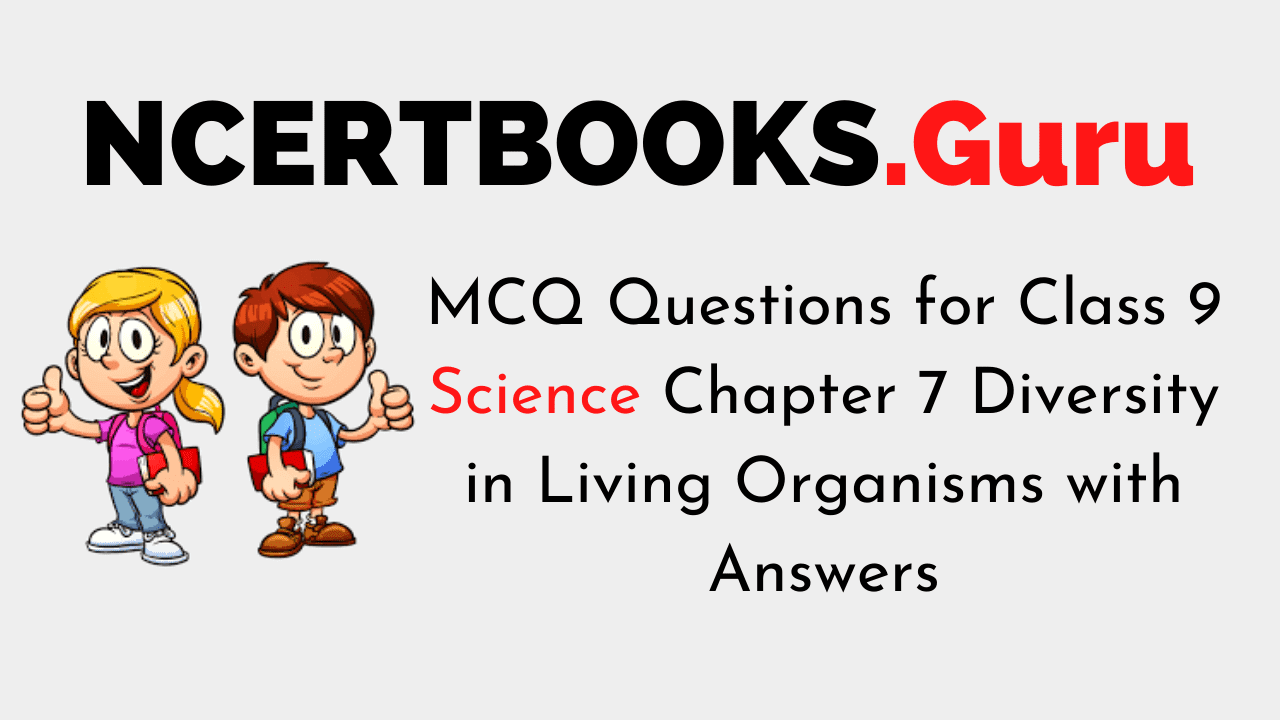MCQ Questions for Class 9 Science Chapter 7 Diversity in Living Organisms with Answers
MCQs from Class 9 Science Chapter 7 – Diversity in Living Organisms are provided here to help students prepare for their upcoming Science exam.
MCQs from CBSE Class 9 Science Chapter 7: Diversity in Living Organisms
1. Fungus and algae both are placed under the same division “Thallophyta”.
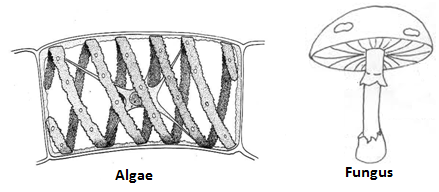
What is the reason that both share the same group?
(a) Both are autotrophic
(b) Both are saprophytic
(c) Plant body in both is not differentiated into root, stem and leaves
(d) Both have false roots
Answer/ Explanation
(c) Plant body in both is not differentiated into root, stem and leaves
2. Choose the option that best describes the characteristics of the kingdom to which the mushroom belongs:
(a) Unicellular prokaryotic organisms
(b) Saprophytic, eukaryotic, multicellular organisms
(c) Unicellular eukaryotic organisms
(d) Autotrophic eukaryotic organisms
Answer/ Explanation
(b) Saprophytic, eukaryotic, multicellular organisms
3. Given below is the figure of funaria– a moss plant.
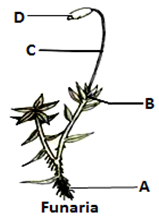
Here theparts indicated by the letters A, B, C and D represent which of the followingstructures?
(a) A → foot; B → rhizoids; C → seta; D → capsule
(b) A → rhizoids; B → foot; C → seta; D→ capsule
(c) A → foot; B→ seta; C→ rhizoids; D → capsule
(d) A → rhizoids; B → seta; C → foot; D→ capsule
Answer/ Explanation
(b) A → rhizoids; B → foot; C → seta; D → capsule
4. Which of the following statement is incorrect?
(a) Aves are warm blooded, egg laying and have four four-chambered heart.
(b) Aves have feather covered body, fore limbs are modified as wing and breathe through lungs.
(c) Most of the mammals are viviparous.
(d) Fishes, amphibians and reptiles are oviparous.
Answer/ Explanation
(d) Fishes, amphibians and reptiles are oviparous.
5. The various species of organisms are grouped together on the basis of similarities and dissimilarities, which is known as the classification. It helps in an easy study of the organisms. Among the following which is not an advantage of classification of organisms?
(a) It helps to understand the interrelationship among the different groups of organisms.
(b) It helps to study the geographical distribution of the plants and animals.
(c) It helps to study the nuclear structure of the organisms.
(d) It depicts before us a picture of all the life forms at a glance.
Answer/ Explanation
(c) It helps to study the nuclear structure of the organisms.
6. Which of the following animals possesses a water vascular system?
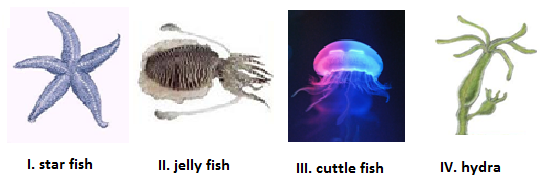
(a) I
(b) II
(c) III
(d) IV
Answer/ Explanation
(a) I
7. Among the following choose the correct option that best describes the characteristics of spirogyra.
(a) Multicellular, auto trophic, root like rhizoids.
(b) Cytoplasmic strands, autotrophic, presence of rhizome.
(c) Presence of male cones, nonvascular, filaments.
(d) Filamentous, presence of Cytoplasmic strands, presence of pyrenoids.
Answer/ Explanation
(d) Filamentous, presence of Cytoplasmic strands, presence of pyrenoids.
8. Paramecium has tiny hair like projections all around the outside of their cell that give the paramecium locomotion and help the food to move in its oral cavity.
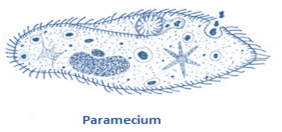
Can you choose the correct name for these locomotory organelles?
(a) Villi
(b) Cilia
(c) Oral groove
(d) Cytopyge
Answer/ Explanation
(b) Cilia
9. Angiospermae is a division of kingdom Plantae. The main characteristic feature of angiosperms is:
(a) Seeds are naked in fruits
(b) Seeds are covered with coats and are in fruits
(c) Fruits are without seeds
(d) Seeds are naked without fruits
Answer/ Explanation
(b) Seeds are covered with coats and are in fruits
10. The international Code of Biological Nomenclature provides the scientific nomenclature for every organism that consists of the genus name and the species name of the organism. Can you guess who introduced this system of binomial nomenclature of the organisms?
(a) Carolus Linnaeus
(b) Robert Hooke
(c) Robert Whittaker
(d) Ernst Haeckel
Answer/ Explanation
(a) Carolus Linnaeus
11. Which of the following have an open circulatory system?
(i) Arthropoda
(ii) Mollusca
(iii) Annelida
(iv) Cnidaria
(a) (i) and (ii)
(b) (i) and (iii)
(c) (ii) and (iv)
(d) (ii) and (iii)
Answer/ Explanation
(a) (i) and (ii)
12. Which among the following is a common feature of chrodates?
(a) Presence of notochord
(b) Presence of triploblastic condition
(c) Presence of coelom
(d) Presence of gill pouches
Answer/ Explanation
(a) Presence of notochord
13. Here alongside are shown the pictures of some reptiles.Among the following can you opt out the statement that does not Match of the characteristics of this family?
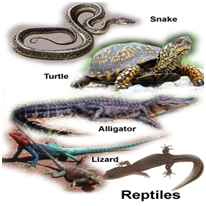
(a) Process of fertilization is internal in these organisms.
(b) Their eggs have a hard covering or shell.
(c) Their skin is dry and keratinised.
(d) They have three chambered heart.
Answer/ Explanation
(d) They have three chambered heart.
14. Four students P, Q, R and S were asked to do the labeling for the partsA, B, C, D and E of hydra shown in the figure alongside. They all submittedtheir answers as given below.
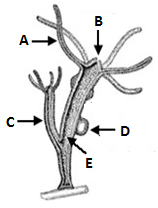
Which of the four students done the labelingcorrectly?
(a) Student P: A- Tentacle; B- Gastrodermis; C- Bud; D- Mouth; E- Young hydra.
(b) Student Q: A- Tentacle; B- Mouth; C- Gastrodermis; D- Young hydra; E- Bud.
(c) Student R: A- Young hydra; B- Mouth; C- Tentacle; D- Bud; E- Gastrodermis.
(d) Student S: A- Tentacle; B- Mouth; C- Young hydra; D- Bud; E- Gastrodermis.
Answer/ Explanation
(d) Student S: A- Tentacle; B- Mouth; C- Young hydra; D- Bud; E- Gastrodermis.
15. Which adaptation of the frog differentiates it from the fish?
(a) Ability to live in water also
(b) Lays eggs in water
(c) Have a streamlined body
(d) Presence of mucous glands in the skin
Answer/ Explanation
(a) Ability to live in water also
